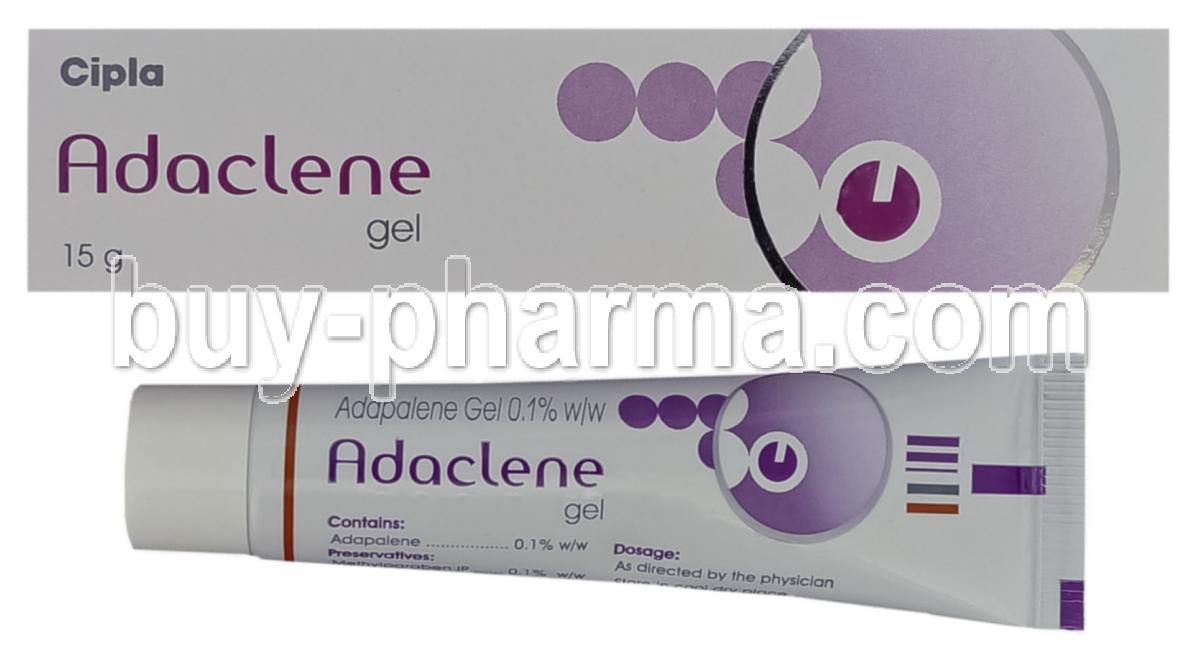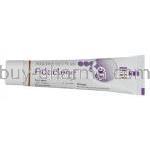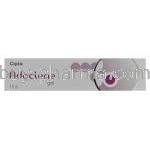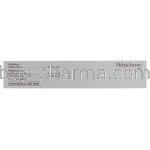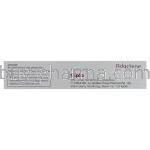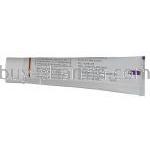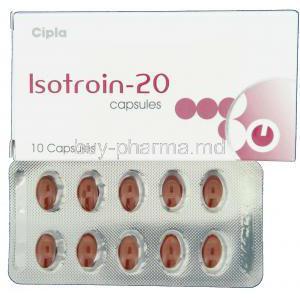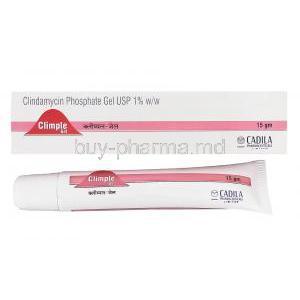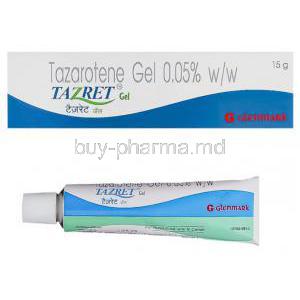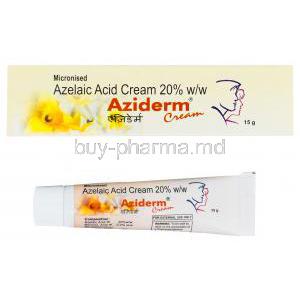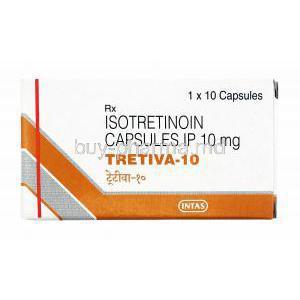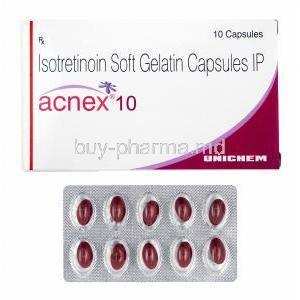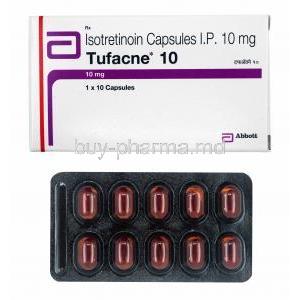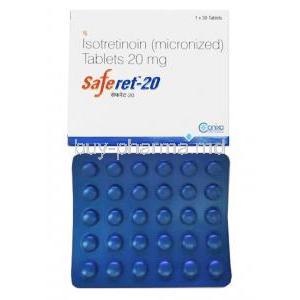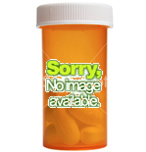Introduction to Adaclene (Adapalene Topical Gel)
Overview of Adaclene Gel and its Dermatological Applications
Adaclene is a clinically recognized topical gel formulated with adapalene, a synthetic retinoid derivative specifically engineered to address a spectrum of dermatologic concerns. Primarily used in the management of acne vulgaris, it targets the core pathological processes underlying acne formation. Beyond acne, its unique pharmacodynamic properties lend itself to cosmetic and therapeutic off-label applications.
Classification: Third-Generation Topical Retinoid
Adapalene is classified as a third-generation retinoid. Unlike first- and second-generation retinoids, it features a rigid molecular structure that confers greater selectivity to retinoic acid receptors. This design reduces systemic absorption and improves skin tolerability, distinguishing it from predecessors like tretinoin and isotretinoin.
Regulatory Approvals and Global Availability
Adaclene has secured approval from regulatory authorities including the U.S. FDA and EMA. It is distributed globally under various trade names and formulations, reinforcing its place in modern dermatology. Its inclusion in essential medicines lists in several countries further underscores its therapeutic relevance.
Common Brand Names and Concentrations
- **Brand Names:** Differin, Adaclene, Adaferin - **Available Concentrations:** - Adapalene 0.1% gel - Adapalene 0.3% gel (higher strength for recalcitrant acne)
Therapeutic Uses of Adaclene Gel (Adapalene)
FDA-Approved Indications
Treatment of Acne Vulgaris in Adolescents and Adults
Adaclene is approved for treating mild to moderate acne vulgaris in patients aged 12 and above. It normalizes follicular epithelial desquamation, helping to prevent microcomedone formation—the precursor to visible acne lesions.
Reduction of Comedones, Papules, and Pustules
Its keratolytic and anti-inflammatory actions target: - Non-inflammatory lesions (blackheads, whiteheads) - Inflammatory lesions (papules, pustules) Clinical improvements are often observed within 8–12 weeks of consistent use.
Off-Label Uses of Adapalene Topical Gel
Management of Keratosis Pilaris
By promoting epidermal turnover and reducing follicular plugging, Adaclene alleviates the rough, bumpy texture associated with keratosis pilaris.
Adjunctive Treatment in Melasma and Post-Inflammatory Hyperpigmentation
When combined with depigmenting agents, adapalene helps fade hyperpigmented patches by accelerating epidermal renewal.
Use in Photoaging and Fine Wrinkles (Off-Label Cosmetic Use)
Adaclene has demonstrated efficacy in: - Smoothing superficial fine lines - Enhancing skin texture - Stimulating collagen production
Prevention and Treatment of Atrophic Acne Scars
Long-term use can prevent scar formation by mitigating lesion severity and duration. It may also promote dermal remodeling.
Application in Seborrheic Dermatitis
Though not a first-line therapy, its anti-inflammatory action may reduce erythema and scaling in select patients with seborrheic dermatitis.
How Adaclene Works: Mechanism of Action
Binding to Specific Retinoic Acid Nuclear Receptors
Adapalene binds primarily to RAR-β and RAR-γ receptors in the skin. This receptor selectivity contributes to reduced irritation and enhanced tolerability.
Modulation of Cellular Differentiation and Keratinization
It alters keratinocyte differentiation and proliferation, reducing follicular plugging—a key factor in acne pathogenesis.
Anti-Inflammatory Properties in Acne Lesions
Adaclene suppresses the inflammatory response by inhibiting chemotactic and immune mediator activity within acne lesions.
Comparison with Other Topical Retinoids (Tretinoin, Tazarotene)
- **Adapalene:** Stable in light and oxygen, less irritating - **Tretinoin:** Photolabile, more irritating - **Tazarotene:** Potent, but higher risk of irritation Adaclene is often preferred for sensitive or retinoid-naïve skin.
Dosage and Administration Guidelines for Adaclene Gel
Recommended Dosage and Frequency
Typical Once-Daily Application in the Evening
Apply a thin film to the affected area once daily in the evening to minimize photosensitivity and maximize efficacy during skin regeneration cycles.
Application Amount and Surface Coverage Instructions
- Pea-sized amount is sufficient for the entire face - Avoid excessive application to prevent irritation
Administration Instructions
Step-by-Step Guide to Proper Skin Cleansing and Application
1. Wash skin with a mild cleanser 2. Pat dry and wait 10–15 minutes 3. Apply a thin layer of gel evenly 4. Avoid eyes, nostrils, and lips
Timing and Duration of Treatment for Optimal Results
Visible improvement typically occurs within 8–12 weeks. Long-term use may be necessary for maintenance in chronic acne.
Tips for Minimizing Skin Irritation During Initiation Phase
- Begin with alternate-day application - Use gentle moisturizers - Avoid other irritating agents during the first weeks
Missed Dose and Discontinuation Considerations
What to Do If a Dose Is Missed
Apply as soon as remembered unless it is close to the next dose. Do not double apply.
Gradual Tapering vs Abrupt Cessation
Tapering is usually unnecessary; however, long-term discontinuation may lead to recurrence of acne.
Composition and Available Formulations of Adaclene
Active Ingredient: Adapalene (Concentration: 0.1%, 0.3%)
- Adaclene 0.1%: Standard strength for moderate acne - Adaclene 0.3%: High strength for stubborn or resistant cases
Inactive Ingredients and Base Formulation (Gel Base, Alcohol Content, etc.)
- Carbomer - Propylene glycol - Methylparaben - Purified water - Alcohol denat (varies by brand)
Available Packaging Sizes and Storage Containers
- Tubes: 15g, 30g, 45g - Store below 25°C; protect from heat and direct sunlight
Common and Serious Side Effects of Adaclene Gel
Frequently Reported Side Effects
- Skin dryness and peeling - Mild redness (erythema) - Burning or stinging sensation - Transient worsening of acne (initial purging)
Photosensitivity and Skin Irritation During Early Use
- Use broad-spectrum sunscreen SPF 30+ - Avoid prolonged sun exposure and tanning beds
Less Common but Serious Adverse Reactions
Severe Local Hypersensitivity Reactions
- Symptoms: itching, swelling, severe erythema - May require discontinuation and medical evaluation
Exacerbation of Eczema or Rosacea
Use with caution in patients with existing inflammatory dermatoses.
Risk of Post-Inflammatory Hyperpigmentation in Darker Skin Tones
- Gradual introduction and moisturizer use may reduce risk - Monitor closely in Fitzpatrick skin types IV–VI
Drug and Product Interactions with Adaclene Gel
Avoidance of Concurrent Use with Other Topical Retinoids
Combining with tretinoin, isotretinoin, or tazarotene increases the risk of cumulative irritation.
Interaction with Astringents, Exfoliants, and Alcohol-Based Products
Avoid toners and scrubs that contain: - Witch hazel - Alcohol - Menthol - Fragrance compounds
Risk When Combined with Benzoyl Peroxide, Salicylic Acid, or Glycolic Acid
- May be used sequentially under dermatological guidance - Start with low concentrations and alternate days to mitigate irritation
Warnings and Contraindications
Important Safety Warnings
Sun Exposure Risks and Need for Photoprotection
Adaclene increases the skin’s vulnerability to ultraviolet radiation. Prolonged sun exposure, even incidental, can trigger erythema, blistering, or exacerbation of existing inflammation. To mitigate photodamage: - Apply broad-spectrum sunscreen (SPF 30 or higher) daily - Wear wide-brimmed hats and sun-protective clothing - Avoid tanning beds and direct midday sunlight
Risk of Increased Skin Sensitivity to Wind, Cold, and Chemical Irritants
The stratum corneum may become transiently compromised, heightening reactivity to environmental stressors. Cold air, windburn, and harsh chemicals can provoke burning, flaking, and discomfort. Emollient use and environmental protection are advised.
Absolute Contraindications
Known Hypersensitivity to Adapalene or Any Gel Component
Adaclene is strictly contraindicated in individuals with a history of allergic reaction to adapalene or any component of the formulation, including preservatives or stabilizers.
Presence of Eczematous, Sunburned, or Broken Skin
Application to compromised skin can exacerbate irritation and facilitate percutaneous absorption, increasing systemic exposure. Therapy should be deferred until the epidermal barrier has normalized.
Careful Administration and Precautionary Measures
General Precautions for Use
Avoiding Application on Mucous Membranes and Near the Eyes
Contact with ocular or mucosal surfaces may result in intense irritation, conjunctival redness, or stinging. The periorbital and perinasal areas should be bypassed during application.
Gradual Introduction in Sensitive Skin Types
Initiate treatment on alternate days during the first 2 weeks. This titration strategy helps the skin acclimate, reducing the incidence of desquamation and erythema.
Precautions in Patients with a History of Skin Allergies
Patients with known allergic contact dermatitis or atopic tendencies should undergo patch testing or begin under medical supervision. Early signs of intolerance warrant reevaluation of therapy.
Duration of Safe Use and Monitoring
Monitoring for Skin Irritation and Clinical Response
Adverse dermatologic events typically manifest within the initial 2–4 weeks. Continual observation for erythema, pruritus, or persistent dryness is crucial. Gradual improvement in acneiform lesions is expected within 8–12 weeks.
When to Consult a Dermatologist
Medical consultation is essential if: - Severe irritation or swelling occurs - No visible improvement is seen after 3 months - Signs of allergic reaction or photosensitivity appear
Use in Specific Populations
Administration to Elderly Patients
Limited Data on Efficacy and Tolerability in Elderly Populations
Controlled trials have not sufficiently included subjects aged 65 years or older to determine differential responses. Caution is warranted due to limited evidence.
Considerations for Skin Fragility and Dryness in Older Adults
Age-related epidermal thinning and reduced sebaceous activity may amplify dryness and irritation. Incorporating lipid-rich moisturizers is advisable.
Use During Pregnancy and Lactation
FDA Pregnancy Category C: Animal Data vs. Human Data
Animal studies have shown teratogenic effects at systemic doses far exceeding topical exposure. However, there are no adequate and well-controlled studies in pregnant women.
Risk-Benefit Assessment During Pregnancy
Adaclene should be used during pregnancy only if the potential benefit justifies the potential risk to the fetus. Avoid facial application if conception is planned.
Recommendations for Use During Breastfeeding
Caution is advised when administering to lactating women. Avoid application on or near the chest area to prevent infant exposure through nursing.
Administration in Pediatric Patients
Approved Use in Adolescents 12 Years and Older
Adaclene is safe and effective for acne treatment in adolescents from age 12. Dosage remains the same as in adults.
Safety and Efficacy in Children Under 12 Not Established
Data are insufficient to support usage in children below 12. Off-label pediatric application should be discouraged unless under specialist direction.
Overdose and Emergency Management
Symptoms of Topical Overdose and Systemic Absorption
Excessive application may induce pronounced erythema, scaling, and discomfort. Though systemic toxicity is rare, unintentional ingestion could lead to gastrointestinal symptoms.
First-Aid Measures for Accidental Ingestion or Overapplication
- Rinse affected skin with cool water if irritation arises - Do not induce vomiting in case of ingestion - Administer symptomatic treatment under clinical supervision
When to Seek Medical Attention
Immediate medical help is required if: - Swallowing of large quantities occurs - Severe skin reactions (e.g., blistering, angioedema) appear - Systemic symptoms such as dizziness or nausea manifest
Proper Storage Instructions for Adaclene Gel
Recommended Temperature Range and Light Protection
Store Adaclene at 15°C to 25°C (59°F to 77°F). Shield from direct sunlight and fluorescent light exposure to prevent degradation.
Shelf Life and Expiration Handling
Check the expiration date on the packaging. Discard any unused product after 3 months from opening or if the texture or color changes.
Storage Away from Moisture and Heat
Avoid storing in humid environments like bathrooms. Excessive heat or freezing conditions may destabilize the formulation.
Handling Precautions and Usage Tips
Proper Hand Hygiene Before and After Application
Wash hands thoroughly before application to prevent contamination. Clean hands post-application to avoid unintended contact with sensitive areas like eyes.
Avoidance of Occlusive Dressings Unless Prescribed
Occlusion can increase the absorption and intensify adverse effects. Only use dressings under physician directive in cases requiring localized enhancement.
Safe Disposal of Expired or Unused Product
Dispose of the product according to local pharmaceutical waste protocols. Do not flush into drains or general household trash to prevent environmental contamination.

